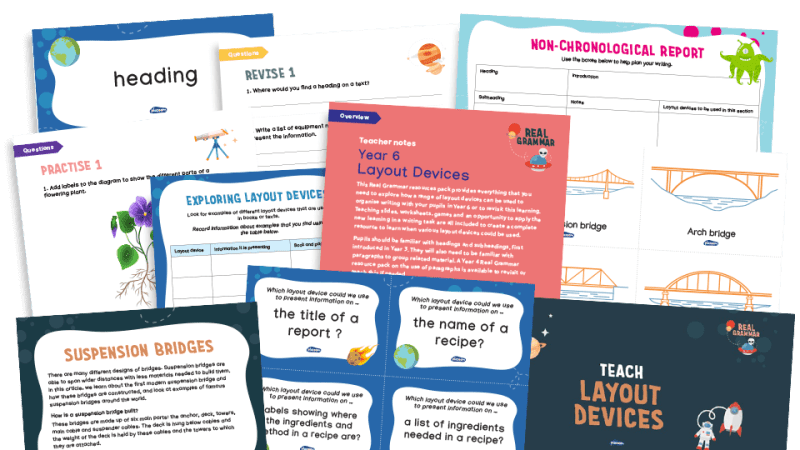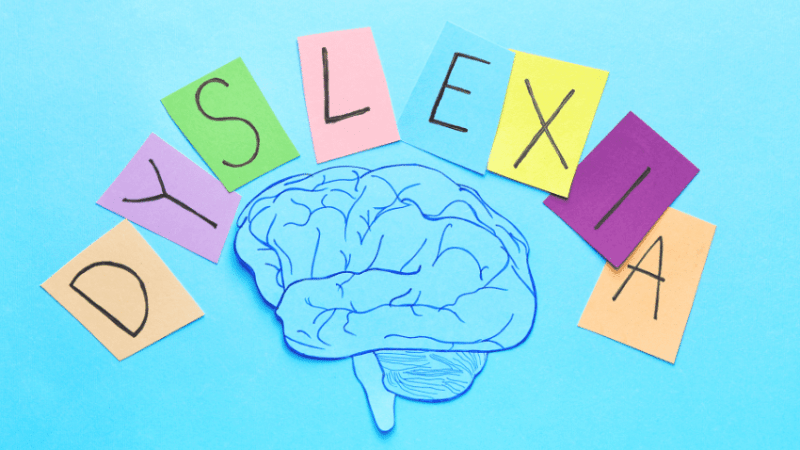Animal Farm GCSE – Must-have resources for teachers
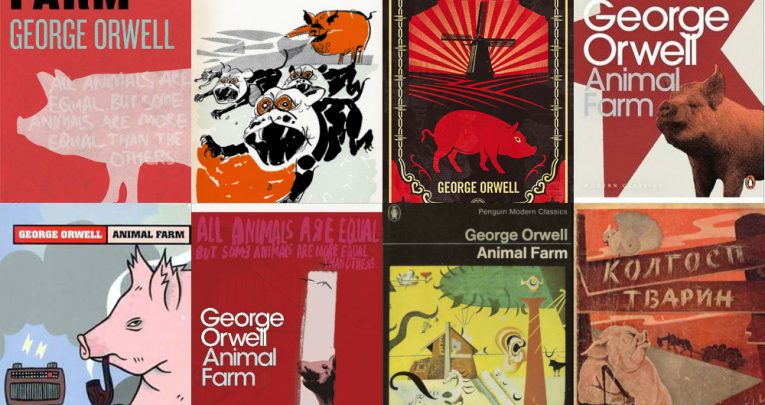
This curated collection of effective and engaging Animal Farm resources will help you teach this cautionary novel…

- by Teachwire
- Classroom expertise and free resources for teachers
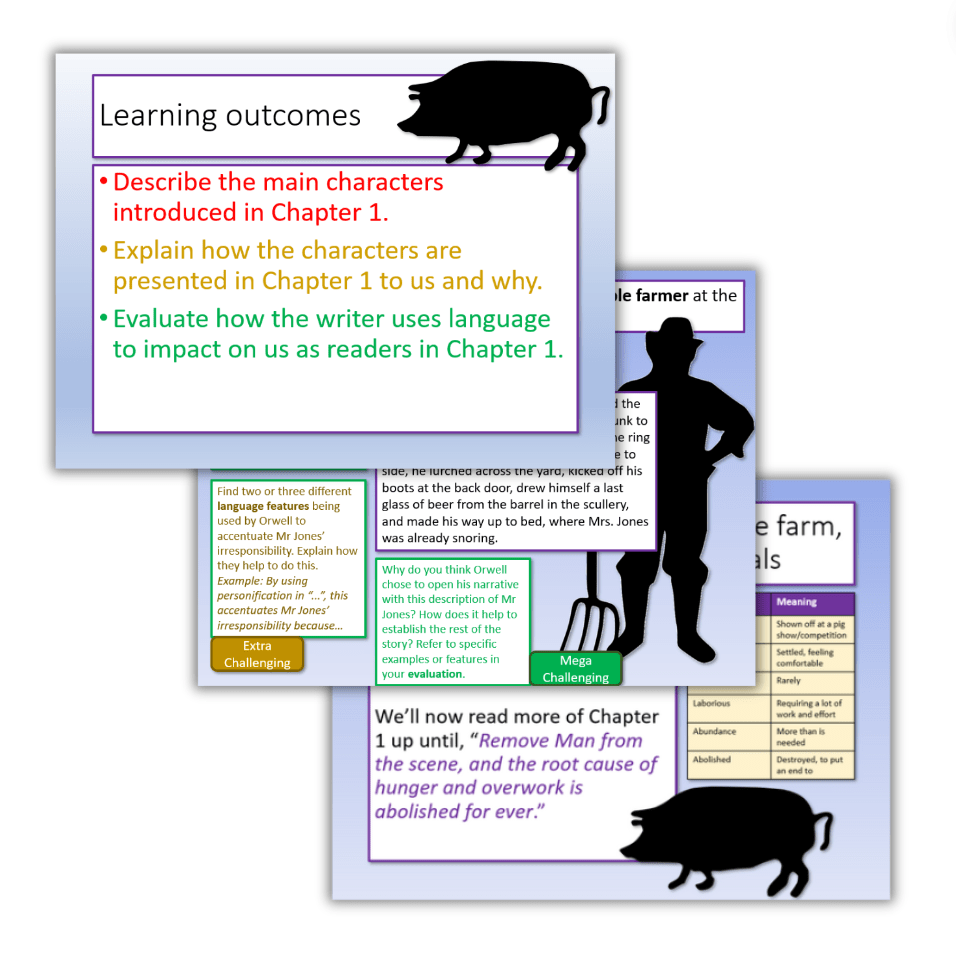
If you’re looking for Animal Farm GCSE teaching resources, you’re in the right place. Like a trusty sheep dog, we’ve rounded up the best lesson plans and worksheets for you to use in the classroom…
Animal Farm GCSE resources
Chapter 1 lesson plan

Use this free, detailed PowerPoint to introduce students to chapter 1 of Animal Farm. You’ll analyse all the major characters introduced in chapter 1 and look for clues about context and deeper symbolic meaning.
Generate powerful discussions
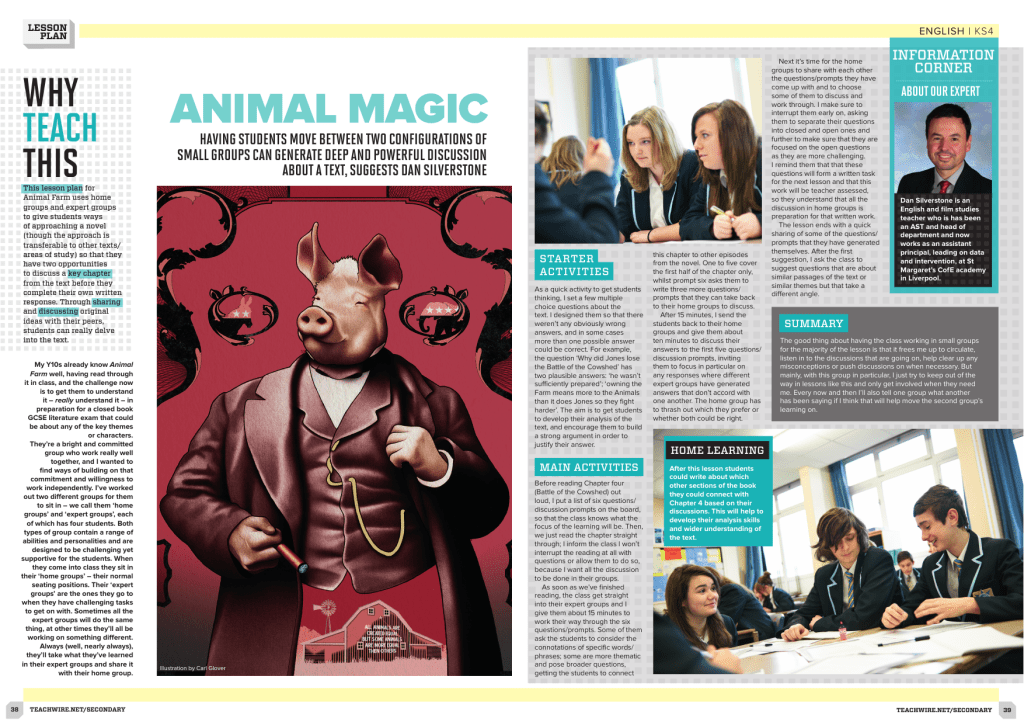
This lesson plan from English teacher Dan Silverstone explains how to use small groups to generate deep conversations about the novel. The aim is to get students to develop their analysis of the text and practise building strong arguments in order to justify their answers.
Satire and symbols
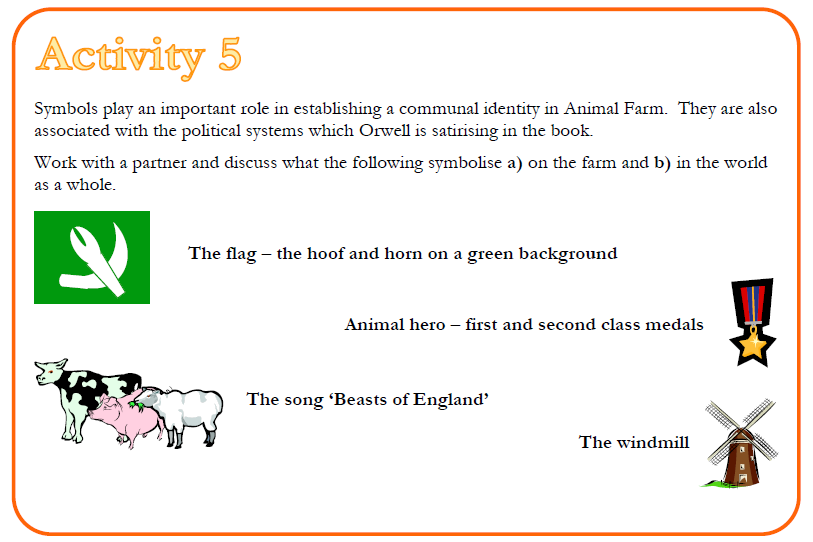
This free satire and symbols PDF includes activities on how Orwell uses language and style in Animal Farm. This includes rhetoric, irony, symbols, rhymes and using political speeches to convince the masses that what the party wants is in their best interest.
Propaganda techniques
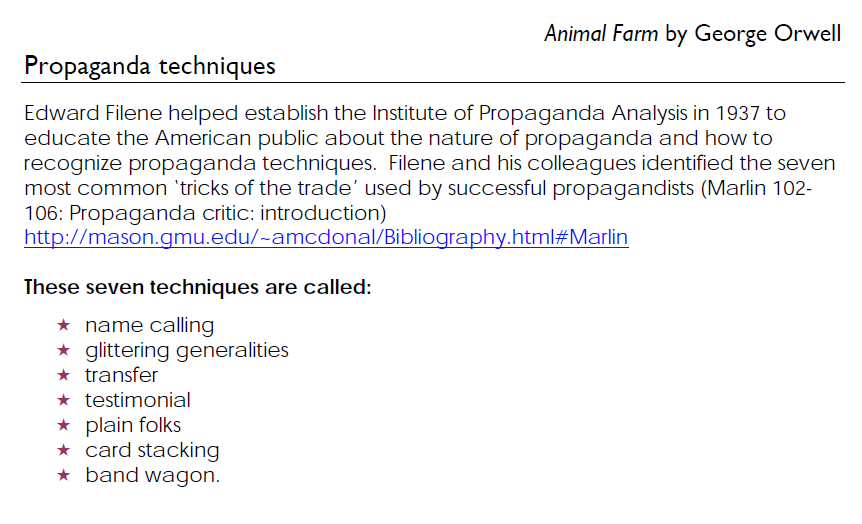
This is a list of propaganda techniques found in Animal Farm and there are also two tasks for students to tackle.
Orwell’s proposed preface

‘The Freedom of the Press’ is George Orwell’s proposed preface to Animal Farm. In it, Orwell discusses the difficulties he faced in getting the book published due to its criticism of the Soviet Union.
He highlights the self-censorship prevalent among British publishers and intellectuals who feared public opinion more than government censorship.
Orwell emphasises the importance of intellectual freedom and the right to criticise all political regimes, including the Soviet Union, which was then an ally of Britain. He argues that genuine freedom of speech means allowing even unpopular opinions to be heard.
Use this resource to provide historical context on censorship and publication challenges. You can also use it as the basis for literary analysis and critical discussions on press freedom and its contemporary relevance.
Animal Farm summary
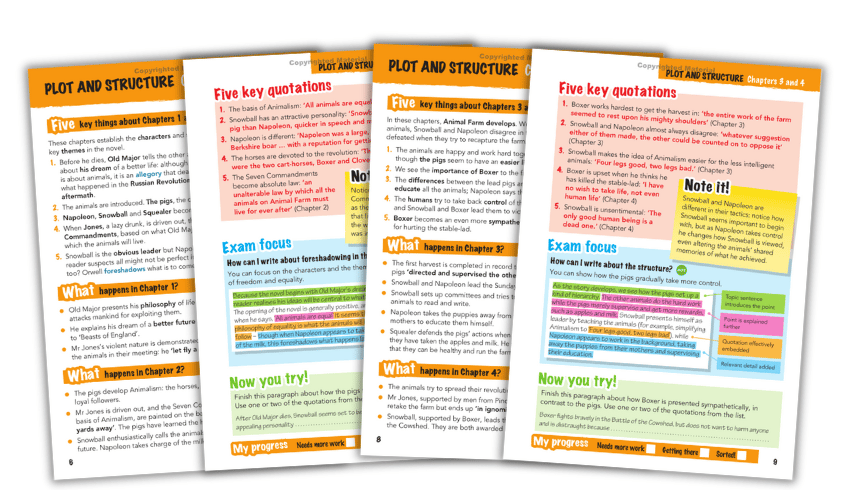
If you’re looking for a succinct summary of the plot and individual chapters within Animal Farm, take a look at this Rapid Revision resource from York Notes. It sets out five key things about each chapter, explains what happens, and provides key quotes and exam questions.
All about George Orwell
Who was Orwell?
For some background about George Orwell (which, of course, also puts the novel into context), watch this video which does a great job in just under 14 minutes.
And in this video, Orwell’s biographer and his son unpack the amazing story behind the book – from its initial rejection onwards.
Animal Farm characters
Visual character guide
This video will do nicely to provide a quick overview of the novel’s characters. It explains the characteristics of the following characters and talks about who their their real-life counterparts are:
- Napolean (Joseph Stalin)
- Snowball (Leon Trotsky)
- Mr Jones (Tsar Nicholas II)
- Squealer (Joseph Goebbels)
- Boxer (Proletariat)
- Old Major (Karl Marx/Vladimir Lenin)
- Benjamin (Educated people)
Animal Farm quotes
Quote worksheets
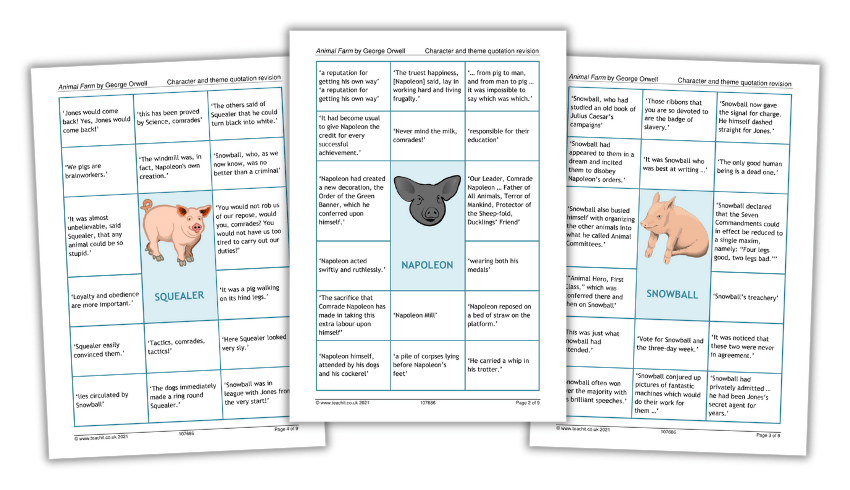
This free revision worksheet pack asks students to colour-code a range of key character and theme quotes. They then have to pick their top three quotes and create a paragraph plan for the given exam questions.
Animal Farm questions
- Sample Edexcel exam question on BBC Bitesize
- Edexcel exemplar answers
- OCR example answers
What is Animal Farm about?
Your students have probably been reading books about farmyard animals as far back as they can remember. Not, however, quite like this.
For many young readers, Orwell is a first dalliance into politics. These early steps into politics and allegory can be confusing for teenagers, which is why the classroom is the perfect setting for studying Orwell’s masterpiece.
Animal Farm, written by George Orwell, is a political allegory and a satirical novella that uses a farm and its animal inhabitants to explore the dynamics of power and corruption.
The story is set on Manor Farm, which is renamed Animal Farm after the animals overthrow their human owner, Mr. Jones.
The rebellion is led by two pigs, Snowball and Napoleon, who aim to create a society where animals can be free, equal, and happy.
However, as the pigs gain power, the farm’s initial ideals begin to deteriorate. Napoleon uses cunning and force to become the farm’s sole leader, eventually becoming as oppressive as the humans the animals originally revolted against.
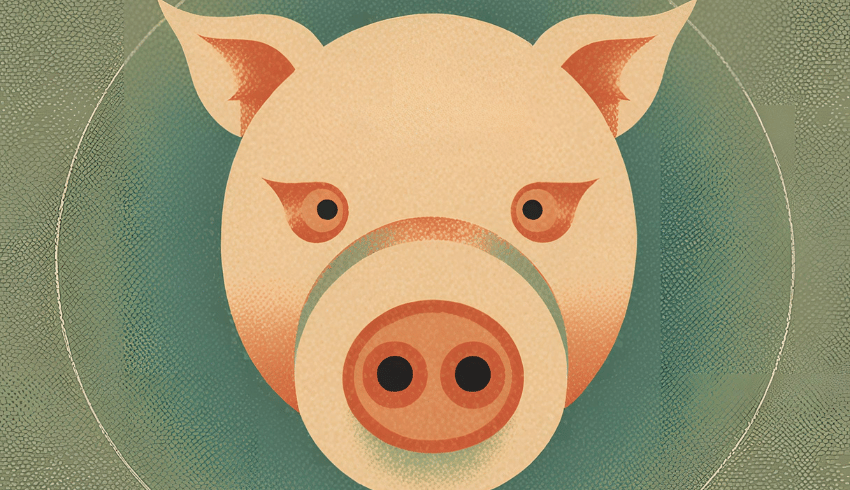
Themes
Through the characters and their actions, Orwell illustrates the dangers of totalitarianism, the corrupting influence of power, and the betrayal of revolutionary ideals.
The novel explores themes such as:
- Power and corruption
- Class struggle
- Propaganda
- The betrayal of ideals
Animal Farm serves as a critique of the Russian Revolution and the subsequent rise of the Soviet Union. The characters and events symbolise key figures and moments from this historical context.
When was Animal Farm written?
It was written by George Orwell during World War II and published in 1945. The timing of its writing is significant because it reflects Orwell’s disillusionment with the outcomes of the Russian Revolution and his critique of the Soviet Union under Joseph Stalin.
Written during a period when the Soviet Union was an ally of the Western powers against Nazi Germany, Orwell’s allegory highlighted the totalitarian and oppressive nature of the Soviet regime.
It challenges the contemporary positive perception of the USSR. This historical context deepens the novel’s critique of political corruption and the betrayal of revolutionary ideals.
Browse resources for Banned Books Week and more revision resources for GCSE English Literature.








